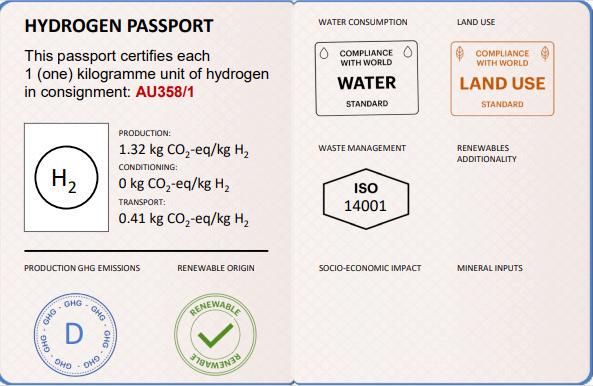
3 minute read
STANDARDISING DEFINITIONS
from HIL ISSUE 12
Standardising Definitions Could Make Global Hydrogen Market Possible
by Hannah Wintle
Advertisement
A recent report by the International Energy Agency (IEA) has suggested using the emissions intensity of hydrogen production to standardise definitions on global scale, in an effort to strengthen the prospect of a global hydrogen trade.
Hoping to move away from terminologies based on colours or terms such as ‘sustainable’ or ‘clean’, an internationally agreed emissions accounting framework has been proposed as an alternative.
The IEA argues that these blanket terms obscure the many different levels of emissions and are, therefore, impractical as a basis for contracting decisions. This, in turn, may deter potential investors, hindering the growth of hydrogen as a more sustainable alternative to fossil fuels.
By assessing the emissions intensity of various hydrogen production routes, the report aims to assist governments in facilitating market and regulatory interoperability and allow them to decide which level aligns with their own circumstances.
Current EU standards dictate that hydrogen should be considered ‘green’ when the emissions intensity is 18g CO2e / MJ. Critics argue that this number should be lower if the ultimate goal is to achieve carbon neutrality.
Clarity triggers investment
Currently, only 4% of announced hydrogen projects are under construction or have received an FID. Impacting the wider commitment to hydrogen investment is the uncertainty of future demand, the lack of infrastructure required to deliver hydrogen to end users, and the lack of clarity in certification schemes and regulatory frameworks.
This clarity may be achieved by adopting transparency on the emissions intensity of hydrogen production, which may then facilitate future investment. Branding the current terminology as ‘impractical’, the IEA claim that in referencing the emissions intensity of hydrogen production in its definition and regulations can enable interoperability and limit market fragmentation.
While several certification systems or regulatory frameworks to define the sustainability attributes of hydrogen are in development, despite their commonalities in scope, system boundaries, production pathways, models for chain of custody, and emissions intensity levels, it is ventured that any inconsistencies in approaches risk forming a barrier to the development of an international hydrogen trade.
Alternatively, the report recommends referring to the emissions intensity of hydrogen production based on a shared understanding of the applied methodology for regulation and certification. This may offer further market development by facilitating a minimum level of interoperability and enable mutual recognition, rather than replacing or duplicating current efforts to develop these frameworks.
Product passports allow transparency
However, there is also a case made for governments and companies to consider any other sustainability requirements they may have, before deciding whether to use hydrogen as a clean fuel and feedstock.
Using emissions intensity as a first step within regulations and certification schemes to enable interoperability remains paramount, though the IEA emphasise the importance of governments’ and companies’ ability to incorporate additional sustainability criteria. This may include the origin of the energy source, land or water use, and socio-economic aspects such as working conditions.
One suggestion to bring these criteria together, is to use ‘product passports’, which will also standardise processes, minimise costs, and maximise transparency.
Though the G7 make up one quarter of today’s global hydrogen production and demand, for an international hydrogen market to be developed, it is also acknowledged that the involvement of other stakeholders, including among emerging economies, is essential.
Driving the need for a global trade in hydrogen is the increased interest in low-emission hydrogen as a result of the global energy crisis and desire to decrease reliance on fossil fuels.
Countries and regions with a large demand but limited ability to produce low-emission hydrogen could therefore benefit from international supply chains, enhancing the need for robust regulations in hydrogen trade.
Definitions based on emissions intensity could form the basis for these regulations, strengthening the prospect of an international hydrogen market.
For a common framework to be implemented effectively, the IEA emphasise that recognition of the new definitions and system as a whole must be adopted by governments, and that compliancy with regulations is essential.
The G7 are poised to lead the change
Ultimately, the proposal to standardise definitions through the use of emissions intensity of hydrogen production is to scale up the production and use of hydrogen, ammonia, and hydrogenbased fuels, eventually leading to the development of a global hydrogen market.
In identifying the G7 as the leaders in decarbonisation efforts and technology development for emerging hydrogen applications, the report calls for the utilisation of their technological leadership and economic power to facilitate an increase in the production and use of low-emission hydrogen.







